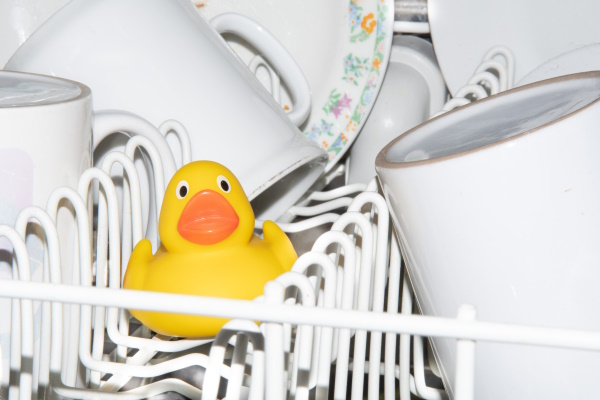The Dishwasher Debate Ends Here: Learn How to Load it Like a Pro
 It's a common source of frustration and arguments in households: how to properly load a dishwasher. The truth is, it's not always clear cut, and everyone has their own preferences. However, by following a few simple guidelines, you can learn how to load a dishwasher in a way that ensures your dishes come out clean and spotless, every time.
It's a common source of frustration and arguments in households: how to properly load a dishwasher. The truth is, it's not always clear cut, and everyone has their own preferences. However, by following a few simple guidelines, you can learn how to load a dishwasher in a way that ensures your dishes come out clean and spotless, every time.The Pre-rinse Debate
Do not pre-rinse your dishes. Most dishwashers have inbuilt turbidity sensors that measure how much dirt is in the water after the first rinse cycle. If you pre-rinse, your dishwasher is going to think that your plates are cleaner than they actually are, so it won’t wash as intensely and they might actually come out dirtier. The food filter is there for a reason, simply remove and clean it once a month.
Sorting and Placement
The first step in loading a dishwasher properly is to sort your dishes by type. This means separating your plates, bowls, cups, and utensils into different sections of the dishwasher. This ensures that each type of dish gets the proper amount of attention and cleaning.
Plates
Plates should be placed upright in the bottom rack, this allows the water to flow through the dishes and reach every surface. You should also avoid stacking plates on top of each other or putting them too close together, as this can prevent water from reaching the dirty surfaces.
Bowls and Cups
Bowls and cups should also be placed in the bottom rack, but they should be placed upside down. This allows the water to reach the inside of the bowls and cups, where food residue is often found.
Cutlery
Cutlery should be placed in the cutlery holder or on the top rack, with the handles facing down.
Pesky Spray Arms
One key element of properly loading a dishwasher is to pay attention to the spray arms. These are the rotating arms that spray water and detergent on your dishes during the wash cycle. Make sure that they are not blocked by any dishes or utensils, as this can prevent them from working properly. Additionally, try to place larger items, such as pots and pans, around the perimeter of the dishwasher, allowing the spray arms to reach all surfaces.
Overloading
It's best not to overload the dishwasher because this can also affect the cleaning performance. It is best to leave some space between dishes, utensils and other items to allow for proper cleaning and circulation of water and detergent.
Evaluate Necessity
Consider whether or not certain items need to be washed in the dishwasher at all. Large items such as baking sheets or cutting boards that are not heavily soiled can be washed by hand instead of taking up valuable space in the dishwasher. This will allow you to save space for dishes that need more thorough cleaning.
By following these simple guidelines, you can learn how to load a dishwasher properly and avoid arguments with your loved ones. It may take some getting used to, but once you get the hang of it, you'll be able to enjoy clean and spotless dishes, every time.
What is your go-to tip for loading a dishwasher properly? Share your thoughts in the comments below!
 Blog
Blog